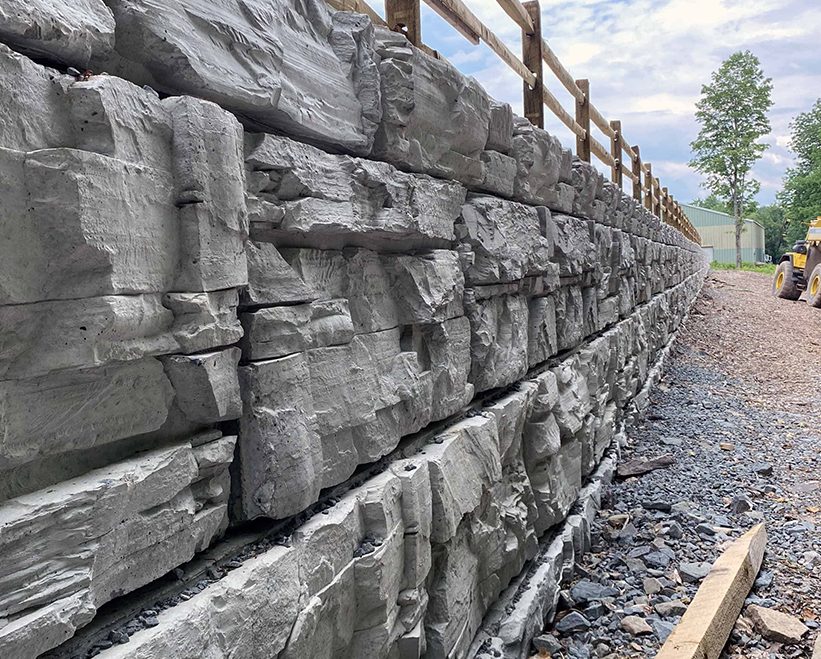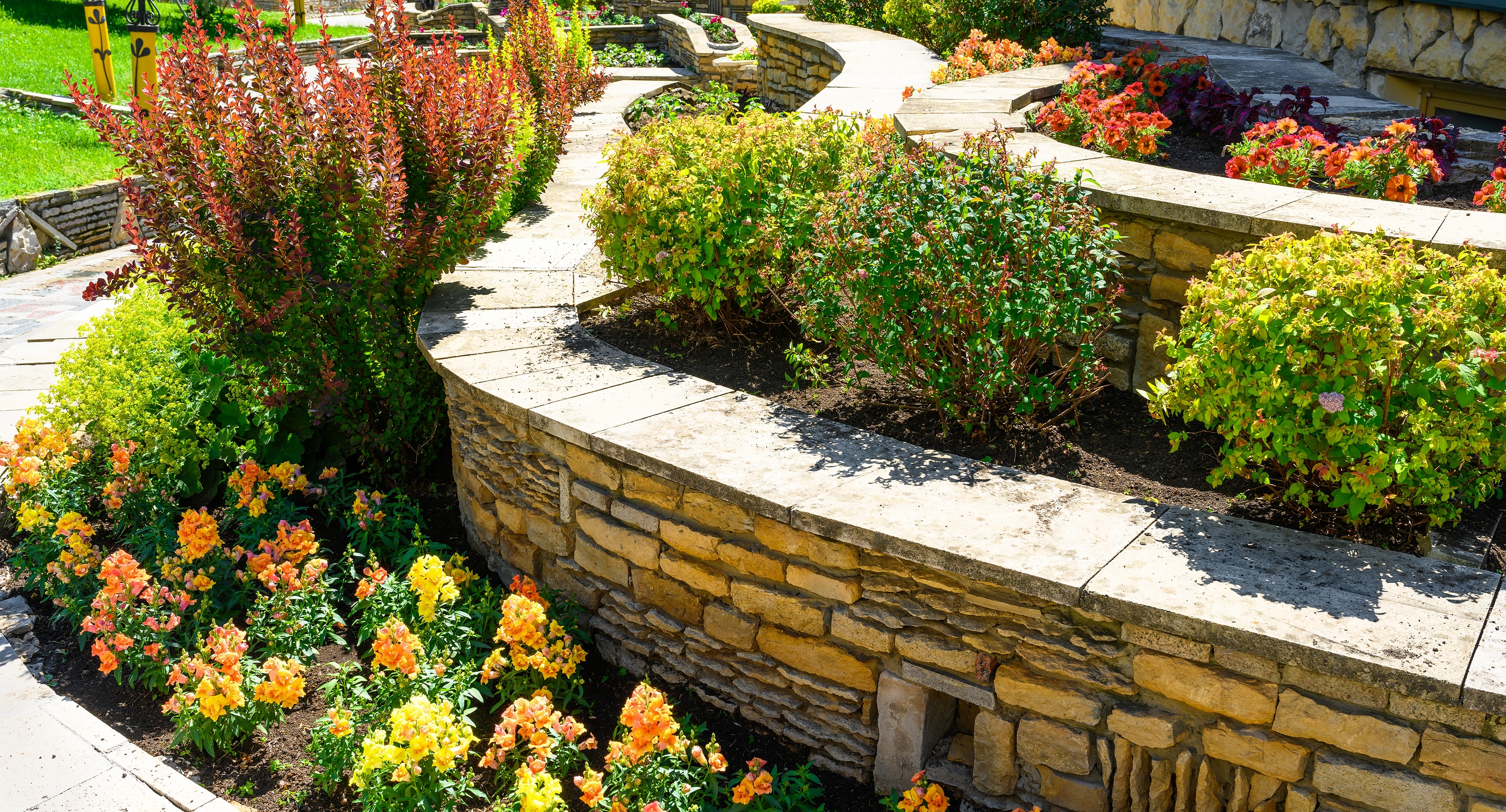Retaining Wall Checklist: Everything to prep before installing OKC Precision Retaining Walls
The Essential Overview to Comprehending the Functionality of Retaining Walls
When it pertains to managing sloped landscapes, retaining walls are important. They not just hold back dirt however likewise protect against erosion and shield your property from prospective landslides. Understanding their performance can help you make notified choices regarding layout and maintenance. However what kinds of retaining walls are offered, and how do you select the appropriate materials? Allow's discover these crucial considerations even more.
What Are Retaining Walls and Their Objective?
Retaining walls are necessary frameworks developed to hold back soil and avoid erosion, especially on sloped landscapes. They offer security to your home, ensuring that soil remains in location and stopping prospective landslides. When you assume concerning a maintaining wall surface, consider its function in handling water overflow, which can wear down soil gradually. Without these walls, you might face costly damage to your landscape and structure.
Additionally, retaining walls can create usable rooms in your lawn. By leveling out a sloped location, you can gain extra practical outdoor area for gardening, patio areas, or play locations. The design and materials you pick can boost your property's aesthetic appeals, making it aesthetically appealing.
Ultimately, understanding the function of retaining walls assists you value their relevance in landscape management (OKC Precision Retaining Walls). They not only secure your residential or commercial property but also add to the overall appeal and functionality of your exterior room
Types of Retaining Walls: A Review
When it comes to handling soil and water drainage in your landscape, knowing the different kinds of retaining walls can aid you make an informed selection for your home. Gravity walls depend on their weight to hold back dirt, making them a durable choice for smaller sized slopes. Cantilever walls, on the other hand, utilize a lever-like style, which permits them to sustain a lot more substantial tons with much less product. For even more complex surfaces, secured walls provide additional security by using cords secured right into the ground. There are modular block walls, which use convenience and ease of installment with interlocking blocks. Each kind has its advantages and applications, so take into consideration factors like dirt conditions, height requirements, and aesthetic choices before making your decision. Recognizing these alternatives will empower you to boost your landscape efficiently while protecting against erosion and managing water drainage.
Key Materials Used in Retaining Wall Building
To produce a tough and effective retaining wall, choosing the ideal materials is vital. You'll discover that concrete is a preferred option because of its toughness and stamina. Precast concrete blocks offer flexibility in style, while poured concrete gives a smooth appearance. If you prefer an even more all-natural appearance, stone or block can add visual appeal and blend with the landscape.
Wood is an additional choice, particularly for smaller sized walls, yet bear in mind it might not last as long due to degeneration. Steel and gabion walls, which use wire mesh full of rocks, are likewise effective for certain scenarios. Each product has its own advantages and downsides, so consider your wall's objective, place, and spending plan. Ultimately, the ideal material will enhance the wall's security and long life, ensuring it fulfills your needs while standing the test of time.

Design Considerations for Effective Retaining Walls
Designing an efficient retaining wall surface includes cautious consideration of several crucial elements, as the wall should hold up against both vertical and lateral forces. Evaluate the soil type and its properties; natural soils act differently than granular ones. You'll also want to identify the elevation of the wall, as taller walls require more durable design services.
Next, consider water drainage. Correct drainage prevents water buildup behind the wall surface, decreasing pressure and prospective failure. Incorporate weep openings or drain pipes for effective water administration.
Also, consider the products you'll utilize. Various materials, like concrete, rock, or lumber, offer varying strengths and visual appeals.
Finally, do not fail to remember regarding regional policies and codes. They usually dictate design standards and construction practices. By dealing with these considerations, you can assure your retaining wall is not just functional but additionally sturdy and secure.
Applications of Retaining Walls in Landscaping and Construction
Retaining walls serve an essential duty in both landscaping and building and construction, as they assist take care of adjustments in elevation and protect against soil disintegration. In landscape design, you can utilize them to create gorgeous terraced yards, allowing you to maximize your outdoor area while including visual rate of interest. They additionally aid define areas, such as pathways or blossom beds, boosting your landscape's total layout.
In building, retaining walls supply security to structures improved sloped land, guaranteeing security and resilience. They're commonly utilized in highways and commercial buildings to manage planet motion and drain properly. By preventing soil from moving, retaining walls shield structures and maintain the integrity of your building projects.
Whether you're aiming to boost aesthetic appeal or guarantee architectural security, retaining walls use functional solutions that can considerably benefit your landscape and construction undertakings. Accept their convenience to achieve both visual and practical goals.
Maintenance Tips for Long-Lasting Retaining Walls
To maintain your retaining walls in fantastic shape, routine assessments and prompt repair services are essential. You also need to assure appropriate drain remedies to protect against water buildup, which can damage the framework. Managing plant life around the walls will help keep their stability and extend their lifespan.

Normal Examinations and Repair Services
While you may think your retaining wall can stand solid on its very own, regular assessments and timely repair work are vital for its durability. Check your wall surface a minimum of two times a year for fractures, protrudes, or indications of wear. Look for any changing in the soil bordering the wall, as this can indicate deeper problems. If you identify a problem, address it quickly; a little split can promptly develop into a substantial architectural failure. Fixing harmed areas quickly can save you cash and protect against comprehensive damages down the line. Additionally, keep the location around the wall clear of particles to avoid wetness accumulation. By being positive about assessments and fixings, you'll guarantee your retaining wall remains tough and practical for several years to come.
Correct Water Drainage Solutions
Efficient drainage is essential for keeping the integrity of your retaining wall, as water build-up can lead to significant architectural problems. To guarantee proper water drainage, install weep openings at regular periods along the wall surface. By carrying out these services, you'll boost the durability and security of your retaining wall surface, securing it versus prospective damages triggered by water buildup.
Vegetation Monitoring Approaches
Healthy plants can play an essential function in the longevity of your retaining wall surface. Start by choosing deep-rooted plants that assist maintain the dirt without causing pressure on the wall.
Maintain the vegetation trimmed to avoid excess weight and keep appropriate drainage. It's important to prevent overwatering, as extreme dampness can wear down the wall's foundation. Furthermore, take into consideration making use of mulch to maintain dirt dampness while suppressing weed growth. By executing these plant life administration approaches, you'll sustain go to this site your retaining wall surface's more tips here toughness and boost the surrounding landscape's charm.
Common Issues and Solutions for Retaining Walls
When it concerns retaining walls, dirt disintegration and drain problems can trigger significant migraines. You need to assure your wall surface is properly made to avoid disintegration and has an effective drain system in position. Let's discover some typical troubles and their options to keep your retaining wall tough and practical.
Soil Disintegration Avoidance
Soil disintegration can be a significant challenge for retaining walls, especially otherwise appropriately resolved. When dirt wears down, it can undermine the wall surface's stability, causing prospective failures. To avoid this, you must consider growing plant life along the wall surface's base. Roots aid hold the soil with each other, minimizing erosion. Furthermore, using disintegration control blankets or floor coverings can give immediate defense while plants establish. You can additionally apply compost to decrease surface overflow and protect the dirt. Normal maintenance, like examining for cracks or indicators of moving, is important to capture problems early. By taking these aggressive steps, you can considerably enhance the longevity and performance of your retaining wall surface versus dirt disintegration.
Drain System Relevance
A trustworthy drain system is essential for the effectiveness and durability of retaining walls. Without appropriate water drainage, water can build up behind the wall surface, developing excessive pressure that could cause structural failure. You may discover bulging or splitting, which signals the requirement for prompt focus. To protect against these issues, consider mounting weep openings, which permit water to run away, or a perforated drain that reroutes water far from the wall. Frequently look for obstructions in your drain system, as debris can prevent its efficiency. Keeping appropriate drain not just protects your retaining wall surface yet additionally guarantees the surrounding landscape continues to be secure. By remaining aggressive, you can avoid pricey fixings and lengthen the life of your retaining wall surface.
Often Asked Concerns
Just How Do Retaining Walls Impact Drainage Solutions?
Retaining walls can considerably read this post here affect drainage systems by rerouting water flow. They stop dirt erosion and take care of groundwater levels, making sure stability. If you're intending building and construction, consider how they'll communicate with your drain design for suitable outcomes.
Can Retaining Walls Be Set Up on Slopes?
Yes, you can set up retaining walls on inclines. They assist maintain the dirt and avoid disintegration. Just assure proper drainage and select the best products to handle the pressure from the dirt behind the wall.
What Is the Lifespan of a Normal Retaining Wall Surface?
A common retaining wall surface lasts around 20 to half a century, relying on materials, maintenance, and ecological conditions. You should regularly examine it to assure its long life and address any concerns quickly to prevent costly repairs.
Are Permits Needed for Building Retaining Walls?
Yes, you usually need licenses for constructing retaining walls. Examine your regional building ordinance and laws to ensure compliance. It's essential to safeguard the appropriate approvals before starting your job to avoid potential fines or issues.
Exactly How Do Retaining Walls Effect Building Value?
Retaining walls can positively impact your home value by improving aesthetics, protecting against disintegration, and developing useful exterior room. OKC Precision Retaining Walls. They likewise demonstrate great land administration, making your residential property a lot more enticing to potential buyers on the market